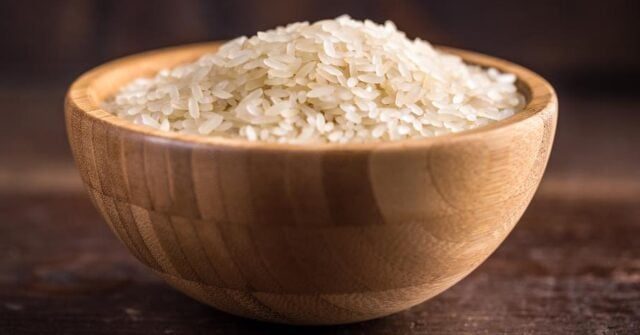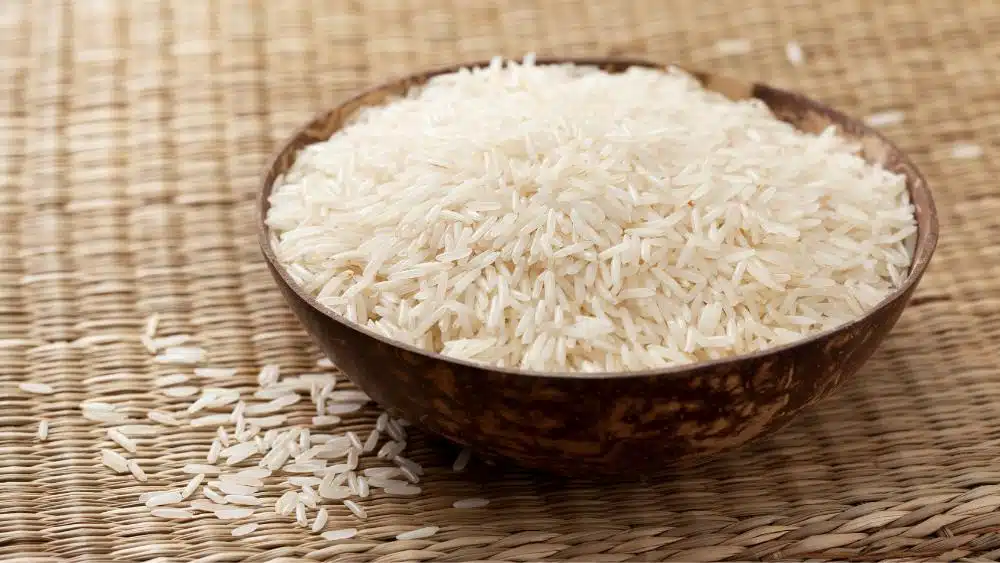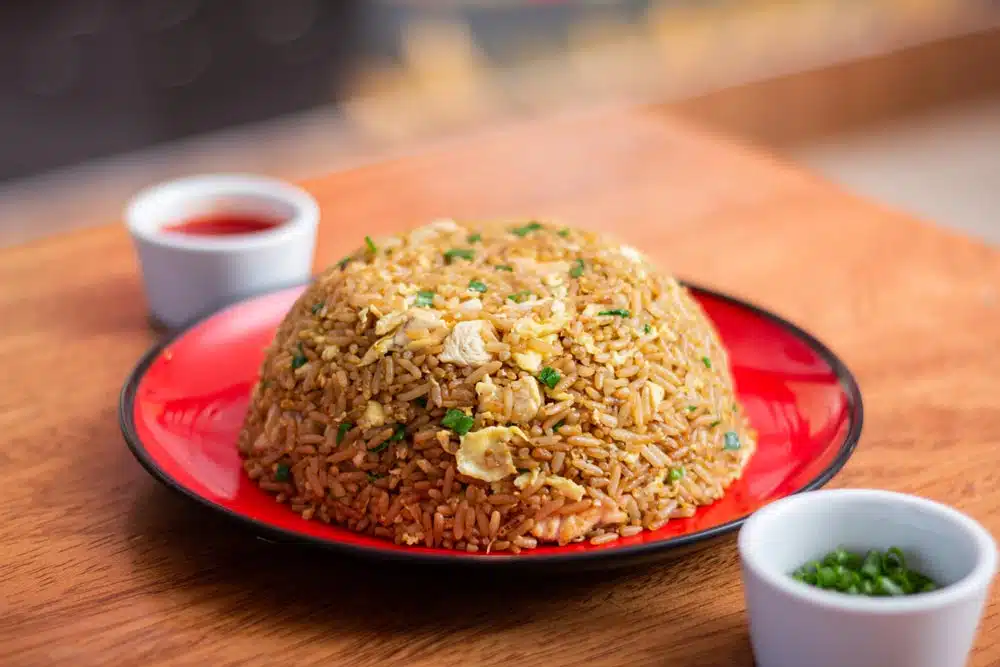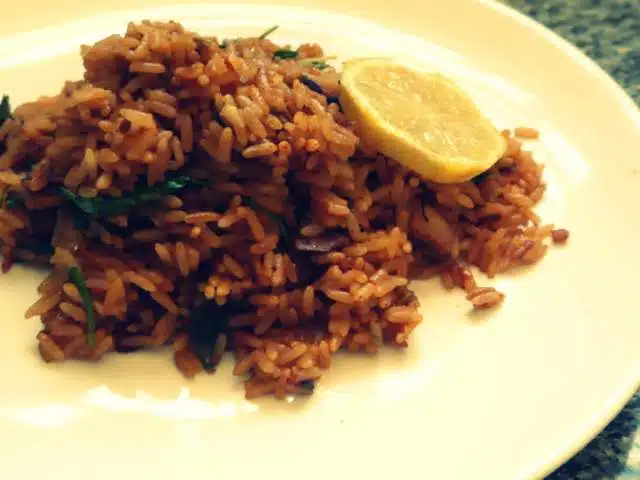Hello navigators and Internet navigates! We welcome you to Paulina Kitchen. On this special occasion we will know everything about Basmati rice , a well -scented variety, originally from India and Pakistan, which will fall in love.
Its unique flavor, its aroma and its versatility in the kitchen, make it an ideal option to replace traditional rice in many dishes ..
We leave you all the tips to cook it perfectly, some tips and cooking recommendations, and a Basmati rice recipe to enjoy as garrison or to use in countless recipes.
Content table
About is the basmati rice
Basmati rice is a variety of long grain rice that is grown mainly in the regions of the Indian subcontinent and in some parts of Central Asia.
Its most distinctive characteristic is its natural aroma and its delicate and sweet taste, which make it the perfect choice for a wide range of recipes.
Some of the peculiarities of this rice are:
- Its grains: the grains are long and thin, which contributes to a light and spongy texture when it is cooked.
- Its aroma: the aroma of nuts and flowers that is released during cooking wraps the kitchen in a delicious fragrance.
- Soft flavor: This rice has a soft and sweet flavor that complements with a wide variety of dishes.
Origin and History of Basmati rice
Basmati rice has been cultivated for centuries in northern India and part of Pakistan, south of the Himalayas. The word "basmati" comes from the Sanskrit "Vasmati," which means "fragrant." This name is a tribute to the unique aromatic qualities of this rice.
Throughout history, this rice has become a fundamental component of the diet in India and Pakistan, where it is used in various preparations, such as the Tikka Masala or Curry chicken or rice . But also predominates a lot in preparations of Middle East and Asian countries.
Its cultivation remains traditional and sustainable, with farmers who follow transmitted practices from generation to generation to ensure the quality and purity of this rice.

Differences between common rice and basmati
A question that usually arises is: what is the difference between rice and basmati ? While both are types of rice, there are significant differences in terms of aspect, flavor and texture.
- Groans: Basmati rice has longer and thinner grains compared to common rice, which usually has shorter and more round grains.
- Aroma: The most distinctive characteristic of Basmati rice is its natural aroma to walnut and flowers, which is much more pronounced than that of common rice.
- Taste: Common rice tends to have a neutral flavor, while basmati rice has a soft and sweet flavor that adds depth to the dishes.
- Texture: When cooking, Basmati rice becomes spongy and separate, while common rice can become sticky.
These differences make Basmati rice the ideal choice for dishes in which you want to highlight the flavor and aroma of rice, such as pilafs, biryanis and curry dishes .
What is special for Basmati rice?
Some of the most interesting properties of this rice are, as we mentioned, its flavor and aroma.
But also its soft flavor and its characteristic aroma make it a perfect canvas for a wide variety of ingredients and spices, which makes it an ideal garrison for meats, birds, fish and vegetables.
What happens if Basmati rice is not wandered?
Basmati rice washing before cooking is a recommended practice for several reasons:
- Eliminate excess starch: when washing the rice, excess starch from the grain surface is eliminated, which helps the rice be more loose and less sticky after cooking it.
- Reduce sodium content: Wasing rice, sodium content can be reduced, which is beneficial for those who follow a low sodium diet.
- Eliminate impurities: washing also helps eliminate possible impurities or waste that may be present in the rice.
Uses of Basmati rice in the kitchen
Basmati rice is a versatile ingredient that adapts to a wide variety of dishes. It goes very well as accompaniment of meats, fish and vegetables, but it is also the favorite to serve with curry dishes, since its soft flavor and aroma balance perfectly with intense flavors.
This rice is also the number one choice to prepare Pilafs ( Pilav ) and Biryanis , since it is cooked uniformly and separates well.
But you can also use rice in cold salads , because it does not stick and its long grains allow you to get a light and delicious dish.
Basmati rice tips
- Adequate washing: As we mentioned before, it is important to wash the rice before cooking it. Rinse it several times until the water comes out clear.
- Optional soaking: Some people prefer to soak the rice for 30 minutes before cooking to obtain an even more spongy result and better conserve their aroma.
- Water proportion: The typical proportion to cook the rice is 1 part of rice for 1.5 parts of water. However, this may vary according to personal preferences and rice marks.
- Slowly cooking: The cooking time of this rice is around 15/20 minutes, depending on the amount. It is important to cook the rice over low heat and with the lid on to prevent the steam from escape. This helps the rice be cooked uniformly and is well separated.
- Let stand: after cooking, it is good for the rice to rest for a few minutes before serving it. This allows the grains to settle and separate even more.
Follow on Instagram ( here )
and on YouTube that I upload new videos every week ( click here )
Basmati rice recipe
Yields: 4 portions
Preparation time: 25 minutes
Basmati rice recipe ingredients
- 1 cup of rice (basmati)
- 1.5 cups of water
- 1 tablespoon of olive
- Salt to taste (optional)
- Condiments to choice: Curry, Cardamomo, Cilantro, Jamaica pepper
How to make Basmati rice step by step
- Wash basmati rice with abundant cold water and optionally, soak it in water for 30 minutes before cooking it to obtain a more spongy and scented result.
- In a saucepan, heat a tablespoon of olive oil over medium heat. Add the Basmati rice washed and drained to the saucepan and stir for a few minutes to peel it, taking care not to burn.
- Pour 1.5 cups of water in the saucepan and add salt to taste. Take the water to boil, and lower the heat to a minimum. Cover the saucepan and cook for about 15-20 minutes, or until the water has been completely absorbed.
- Remove the saucepan from the heat and let the rice stand for a few minutes before uncovering it. Separate rice grains with a fork and use it for the desired dish. Season to taste.






